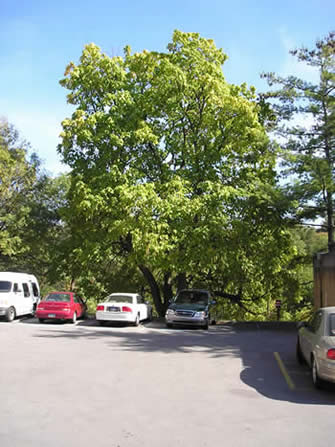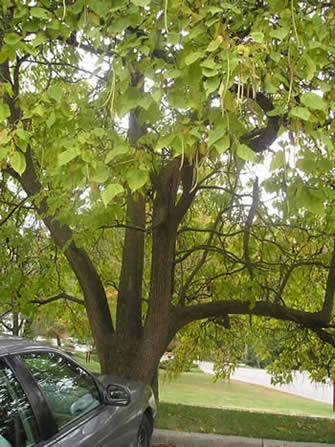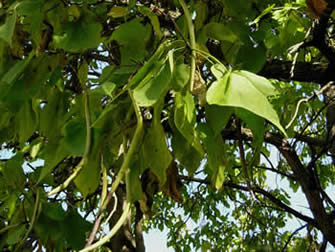northern catalpa tree medicinal uses
Loose upright panicles of fragrant white 2-inch bell-shaped flowers with yellow and. As well as having a sedative effect the plant also has a mild narcotic action though it never causes a dazed condition.
/GettyImages-1251337179-fab6404e1b1e45b5a44c1c070eedba3d.jpg)
What To Know About Catalpa Trees And Their Worms
Medicinal Uses of Catalpa Tree Parts.
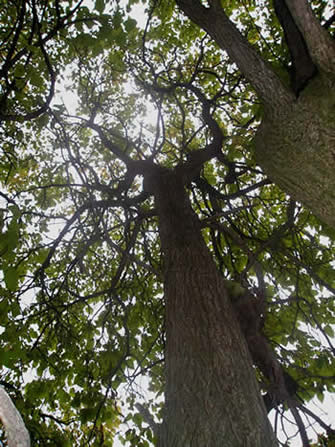
. Bark color and texture. The other use of its extract is against snake bites. Catalpa also has several medicinal uses.
First cultivated in 1754 the wood was used for fence posts and railroad ties because of its resistance to rot and the trees fast growth rate. The Catalpa tree is native to the rich bottomlands of the central Mississippi River basin and has been widely planted in the eastern United States3 It is found mostly in moist. Selecting Shrubs for Your Home.
And the southern species which bears little difference except in sizeThey both bear large heart shaped 3 lobed leaves. Northern catalpa is an easy tree to grow in medium to moist loamy soil that is well-drained and in a full sun to partial shade location. Northern Catalpa Catalpa speciosa.
The spectacular flowers of Northern Catalpa are truly a sight to behold. Some people develop a skin allergy when handling the flowers. This catalpa is a vigorous grower reaching 40 to 60 feet in height at maturity with a 20- to 40-foot spread.
Find out hundreds of medicines plants around house how turn them into natural remedies. The long interesting seed pods persist through the winter. Native to the midwestern United States.
It acts as an antidote against snake venom. Medicinal Uses Of The Catalpa Tree. Northern Catalpa has no known medicinal uses and is mainly used for ornamental purposes.
They are typically found in the midwestern parts of the country. The tree has dense foliage in summer and porous foliage in winter. Catalpas prefer moist deep well-drained soil but.
They are fast growers and a 10-year-old sapling may stand about 6 metres 20 ft tall. Its leaves are used in some kind of medicinal tea. The spectacular flowers of Northern Catalpa are truly a sight to behold.
The southern catalpa tree also has medicinal uses and a tea made from the bark has been used as an antiseptic snake bite antidote. Medicinal Uses of Catalpa Tree Parts. Northern catalpa is primarily used today as a large ornamental shade tree.
Free Shipping on Qualified Orders. They have characteristic large heart-shaped leaves which in some species are three-lobed. The family is mostly tropical and subtropical.
Catalpa is a Midwest native tree that grows 40 to 60 feet tall with a narrow open irregularly rounded crown and spreading branches. In the past the wood of Northern Catalpa was used to make rail ties and fence posts because its wood is resistant to moisture and decay. Catalpas have soft brown wood often used for.
The leaves are used as a poultice on wounds and abrasions. There are two species in North America the northern catalpa Catalpa speciosa which has larger leaves flowers and bean pods. Northern Catalpa Catalpa speciosa.
Catalpa is also known to be a mild narcotic which is used in curing the whooping cough. Northern catalpa has an irregular oval crown. A tea made from the bark has been used as an antiseptic antidote to snake bites laxative sedative and vermifuge.
It can be made into a tea that is an antidote for snake bites and has also used for a laxative. Gray Mold Trees and Shrubs Botrytis cinerea and other species Wood Rots and Decays Many genus and species involved Additional pests and problems that may affect this plant. The catalpa tree is an ornamental shade tree that produces dense clusters of white flowers and long seed pods.
The Southern Catalpa is a perennial deciduous tree that blooms from May to June. The catalpa blooms with a heavy load of flowers in the spring followed by a large number of leaves in the fall. 50 feet tall by 25 feet spread.
Common names for this tree are many and colorfulincluding cigar tree Indian bean tree. Medicinal use of Indian Bean Tree. 4-8 inch upright panicles hold scores of the 2-inch orchid-like flowers.
The large heart-shaped leaves and abundant showy-white spring flowers give catalpa a tropical appearance. The large size of the leaves provides a very dark shade and is a popular habitat. Northern Catalpas can reach heights of up to 60 ft 1828 m and have a canopy spread of up to 40 ft 1219 m.
Sometimes troubled the catalpa sphinx mothpowdery mildew and leaf spots. The catalpa tree is found in forests from southern Illinois and Indiana to western Tennessee and Arkansas. PFAF calls its roots highly poisonous but various medicinal teas have been made from its bark seeds and.
Despite the common name of bean tree however this catalpa has no known edible uses. Southern Illinois and Indiana south to western Tennessee and Arkansas. Teas and poultices made from the bark and leaves are often used in herbal medicine as laxatives and mild sedatives and to treat skin wounds and abrasions infections snake bites and even malaria.
There are several industrial and medicinal uses of this woody plant some of these uses are enlisted below. It has therefore been used with advantage in preparations with other. The scientific name for the Northern Catalpa is Catalpa speciosa and belongs to the Bignonia family.
This large tree is best suited for large open spaces at least 50 feet from permanent structures or underground features such as pools or sewer lines. A tea made from the bark has been used as an antiseptic antidote to snake bites laxative sedative and vermifuge. Uses and benefits of Catalpa trees.
Fortunately the tree is much hardier than it appears and can even be grown in the far western reaches of the state. Most Catalpa are deciduous trees. Other plants in the family include trumpet creeper Campsis radicans and crossvine Bignonia capreolata.
They are especially striking against the backdrop of the trees large heart-shaped leaves. Their ruffled white petals are accented with yellow stripes and purple spots. In the winter the Southern Catalpa develops many large seedpods.
Ad 300 pages about All Medicinal Plants how to turn them into powerful natural remedies. Ad Compare Prices Read Reviews. Northern Catalpa Care.
10 rows Medicinal Uses of Catalpa Tree Parts. They are used in traditional medicine to treat conditions. Northern Catalpas are a species of tree native to the United States.
These medicinal properties were never developed but the tree was promoted to railroads. Species in this family range from woody vines to large trees. Because of the shape of the leaves the Southern Catalpa was used for heart illnesses by Native American medicine men.
They typically grow to 1218 metres 4060 ft tall with branches spreading to a diameter of about 612 metres 2040 ft. Northern catalpa is a member of the Bignoniaceae the Bignonia or Catalpa family. Northern Catalpa Tree Trees To Plant Landscape Trees Showy Flowers.
Northern catalpa is very adaptable to adverse conditions but has weak. It has large heart-shaped leaves and large clusters of fragrant white flowers.

The Catalpa Tree Dave S Garden

The Catalpa Tree Dave S Garden

Catalpa Speciosa Shade Trees Beautiful Gardens Outdoor Gardens
/northern-catalp-tree-profile-5072953-05-8eb17d9d187e4c0099e5dc38143b4ec6.jpg)
How To Grow And Care For Northern Catalpa
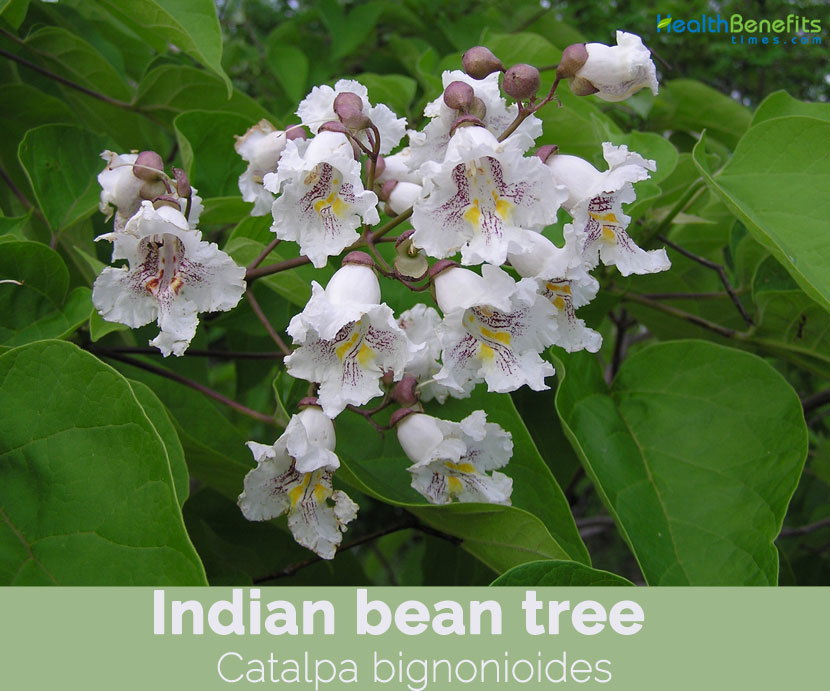
Indian Bean Tree Facts And Health Benefits

Cigar Tree Catalpa Speciosa Youtube

The Catalpa Tree Dave S Garden
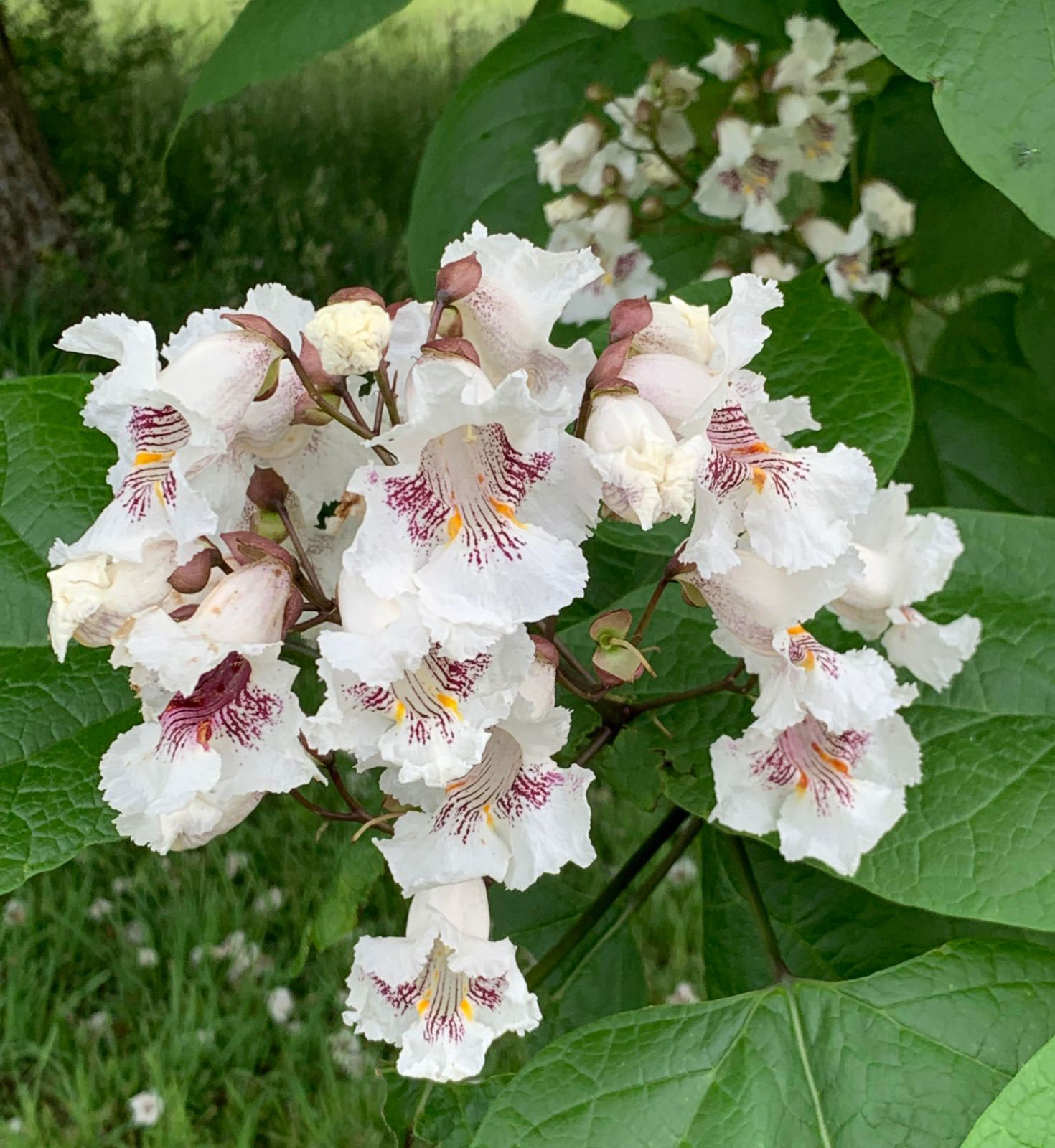
Indian Bean Tree Facts And Health Benefits

Catalpa Trees Indian Bean Trees For Sale Ornamental Trees Ltd


